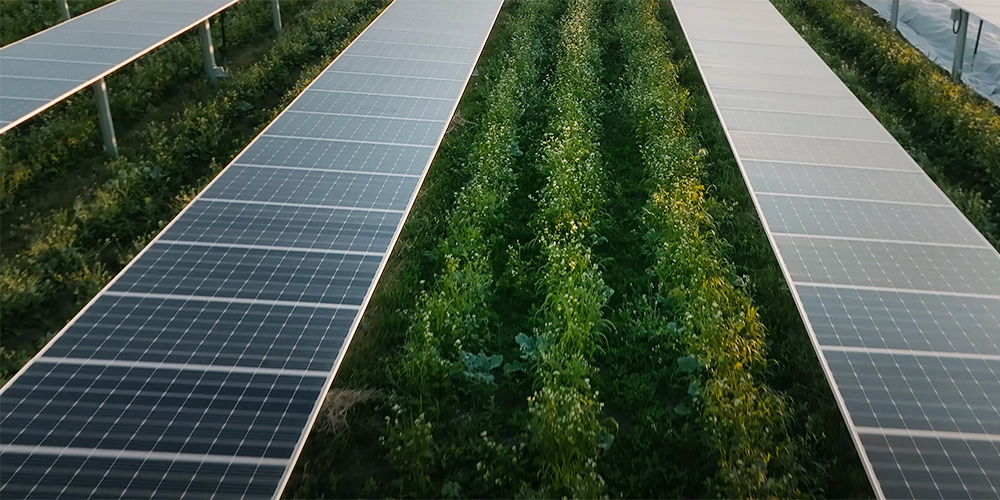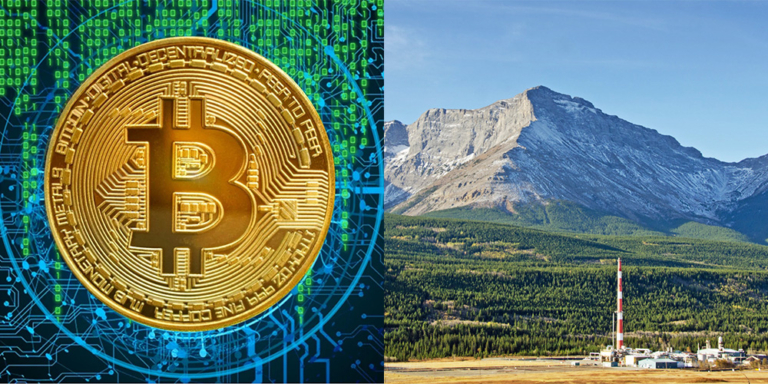The impacts on productive farmland and agricultural production are two of the main reasons Premier Smith gave for her sudden 7-month pause on approvals of renewable energy projects.
Really? There wasn’t a more nuanced option than shutting down a growing, job-creating industry with a moratorium?
But positioning renewables and agriculture as competitors is shortsighted and ignores opportunities where they can not only coexist but, thrive together.
Agrivoltaics, the innovative integration of agriculture and solar energy technology, is a promising solution to land use, food production, and renewable energy generation challenges.
This approach involves the coexistence of solar panels and crops on the same land, creating a symbiotic relationship that benefits both.
How is that possible?
At Jack’s Solar Garden in Longmont, Colorado, a 1.2-megawatt agrivoltaics research site, farmers and scientists are exploring the potential of growing crops under the partial shade of solar panels.
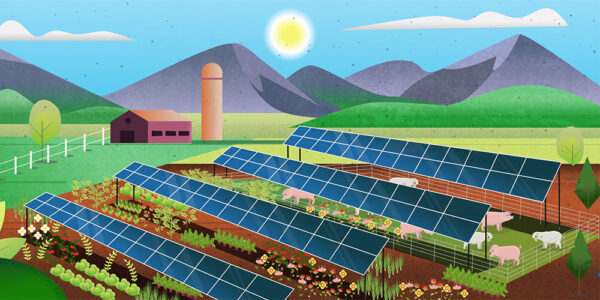

The results are promising.
For instance, lettuce grown under the panels was found to be “much bigger and more delicious” than those cultivated in full sun.
Other vegetables, such as chard and kale, also thrived under the panels, growing three to five times larger than on regular farms.
The shade provided by the solar panels creates a microclimate that can protect crops from extreme weather conditions, potentially extending the growing season and improving yield quality.
There is a benefit to the solar panels as well. The plants cool the soil and release water vapour during photosynthesis, which helps cool the solar panels, increasing the panels’ efficiencies. Generally, the cooler a panel can be, the more energy-efficient it is.
With our summers getting increasingly warmer, the cooling effect of shade on the plants and the plant’s cooling action on the solar panels becomes even more critical.
Solar panels also protect crops from extreme weather by buffering winds and sheltering crops from hail, and the panels protect the ground from excess evaporation, conserving water. A study in the Netherlands and results from Jack’s Solar Garden both show that agrivoltaic crops require half the irrigation of the same crops in reference fields.
However, challenges, mostly maneuvering around the panels for crop harvesting, can be cumbersome, likened to “farming in an obstacle course.”
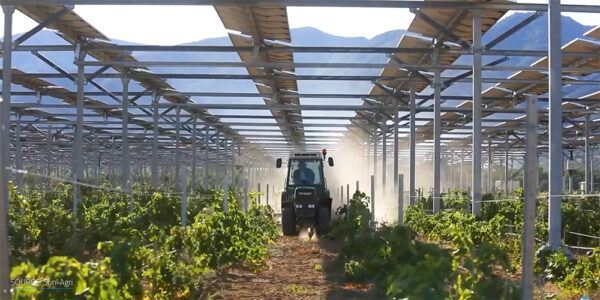

Using large-scale mechanized machinery like combines is impossible in traditionally-spaced solar farms. However, shade-tolerant crops, like lettuce, kale, spinach and raspberries, grown under solar panels are less appropriate for large harvesting machines.
But even the mechanization problem can be solved by spreading the solar panels in wider rows to accommodate larger equipment or using vertically mounted bi-facial solar panels, which are panels positioned at a 90-degree angle to the land and designed to capture sunlight on both front and back surfaces, leaving more room for harvesting machinery to move between rows.
Solar panels can also be mounted on stilts, allowing harvesting machinery to pass underneath. With some planning, commonly cited farming problems under solar panels can be solved.
Making an agrivoltaic solar farm costs 5 – 20 percent more than a traditional one. Still, the long-term yields of the crops plus the electricity generated should easily offset the higher short-term investment costs.
The benefit to agrivoltaics is that farmers can still grow crops, usually a wider variety of crops than previously possible, often with more commercial value and charge a lease to the solar operator for land use.
The result? More income than traditional farming and better protection against heat, wind and hail yield losses.
So, the concerns expressed by critics of solar about industrial solar displacing farming and raising food prices may be overblown, especially when agrivoltaics offers a viable solution.
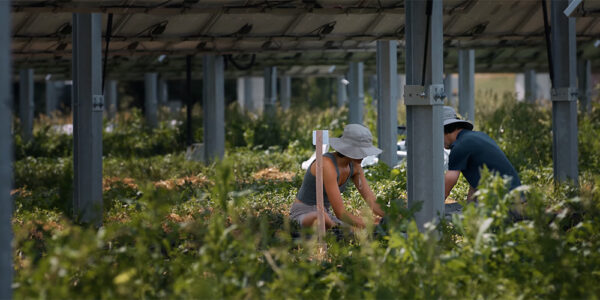

With its potential for rapid solar energy expansion, Alberta could benefit immensely from Agrivoltaics. Still, the delay in approving new solar projects has also delayed our progress in producing more energy and creating new food production options.
Research indicates that using just 1 percent of Alberta’s agricultural land for agrivoltaics could eliminate carbon emissions from the province’s electricity sector.
Agrivoltaics represents a win-win situation. It can boost crop yields, provide steady income for farmers, and increase renewable energy production.
Alberta has the distinct advantage of abundant sun and existing agricultural lands. Let’s use this advantage.
But has our government’s obsession with oil and gas production turned Alberta’s advantage into a disadvantage that blinds them to best-of-both-world solutions?

